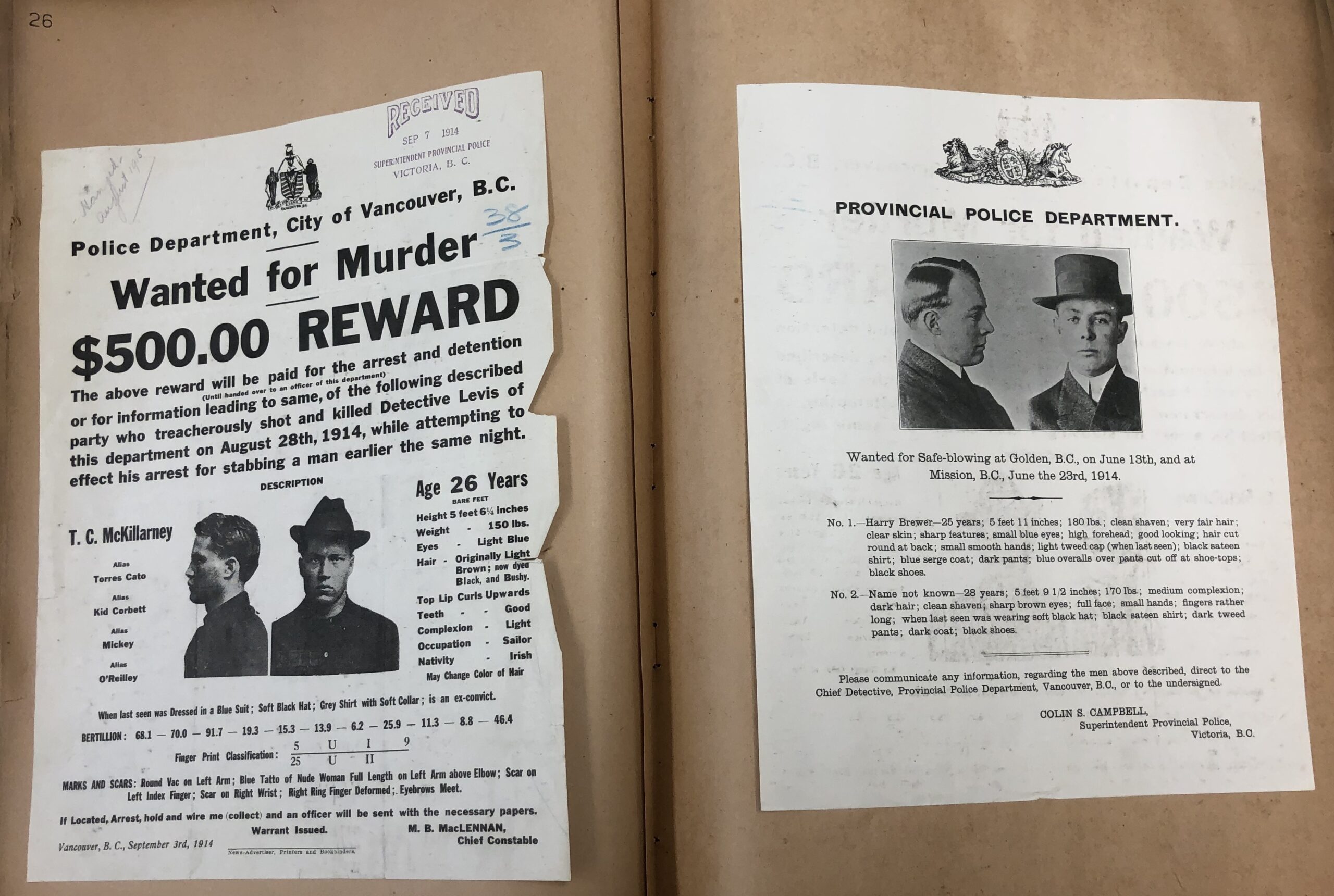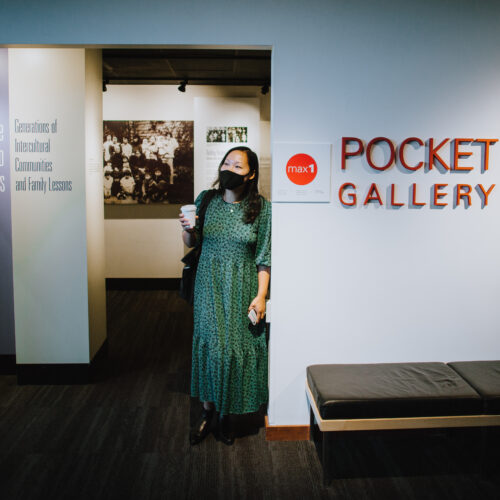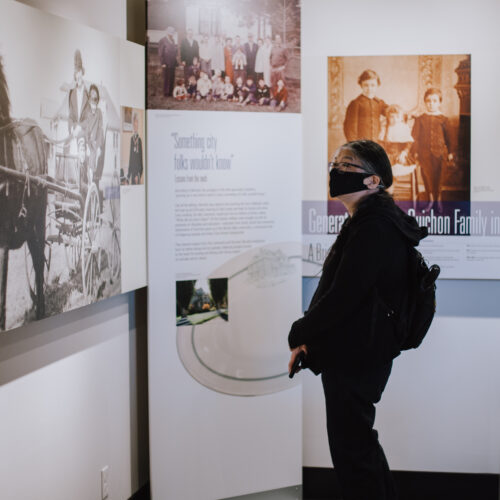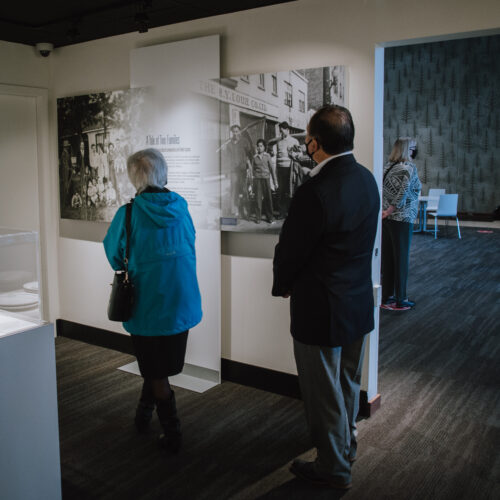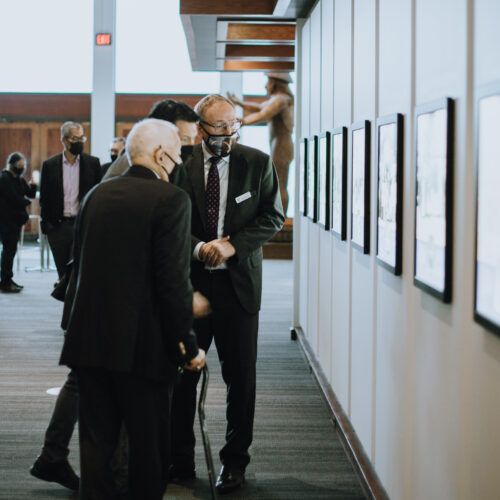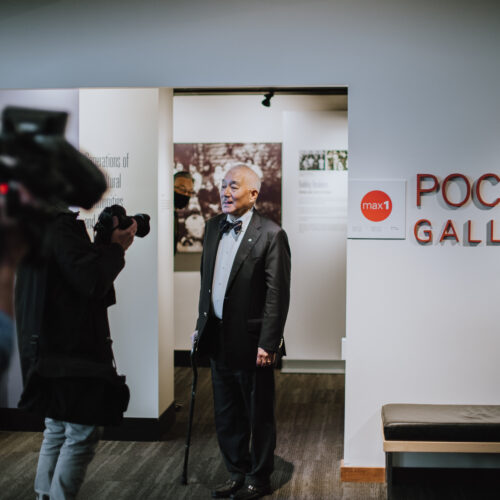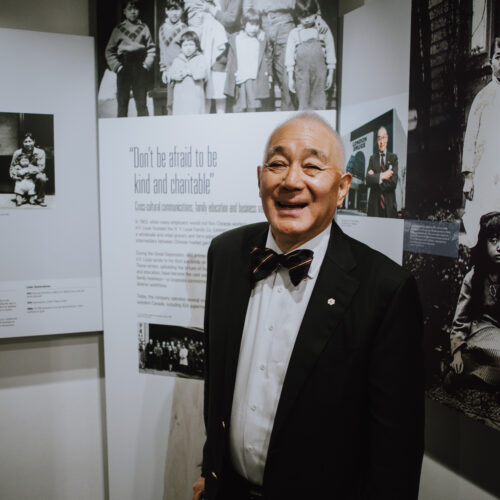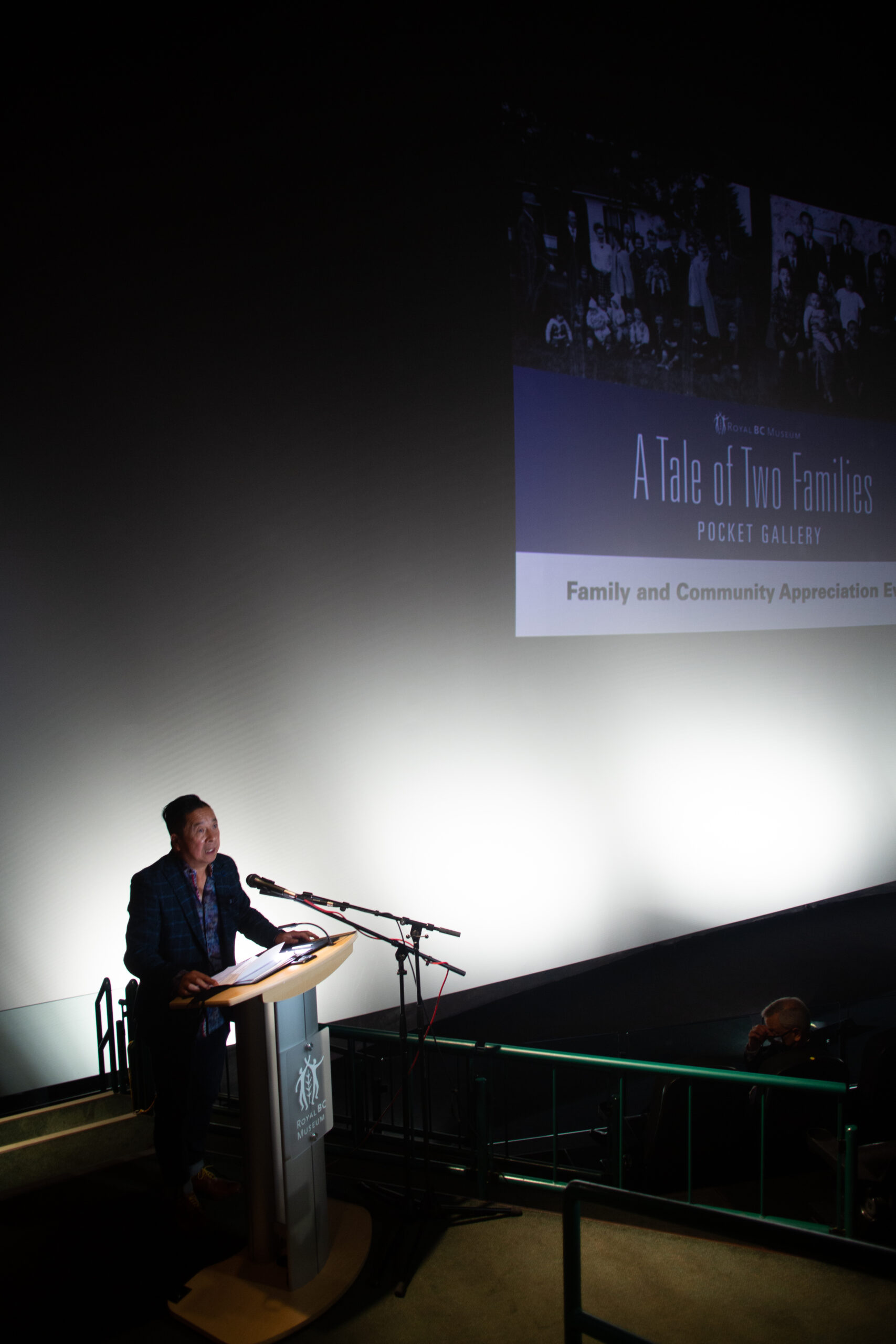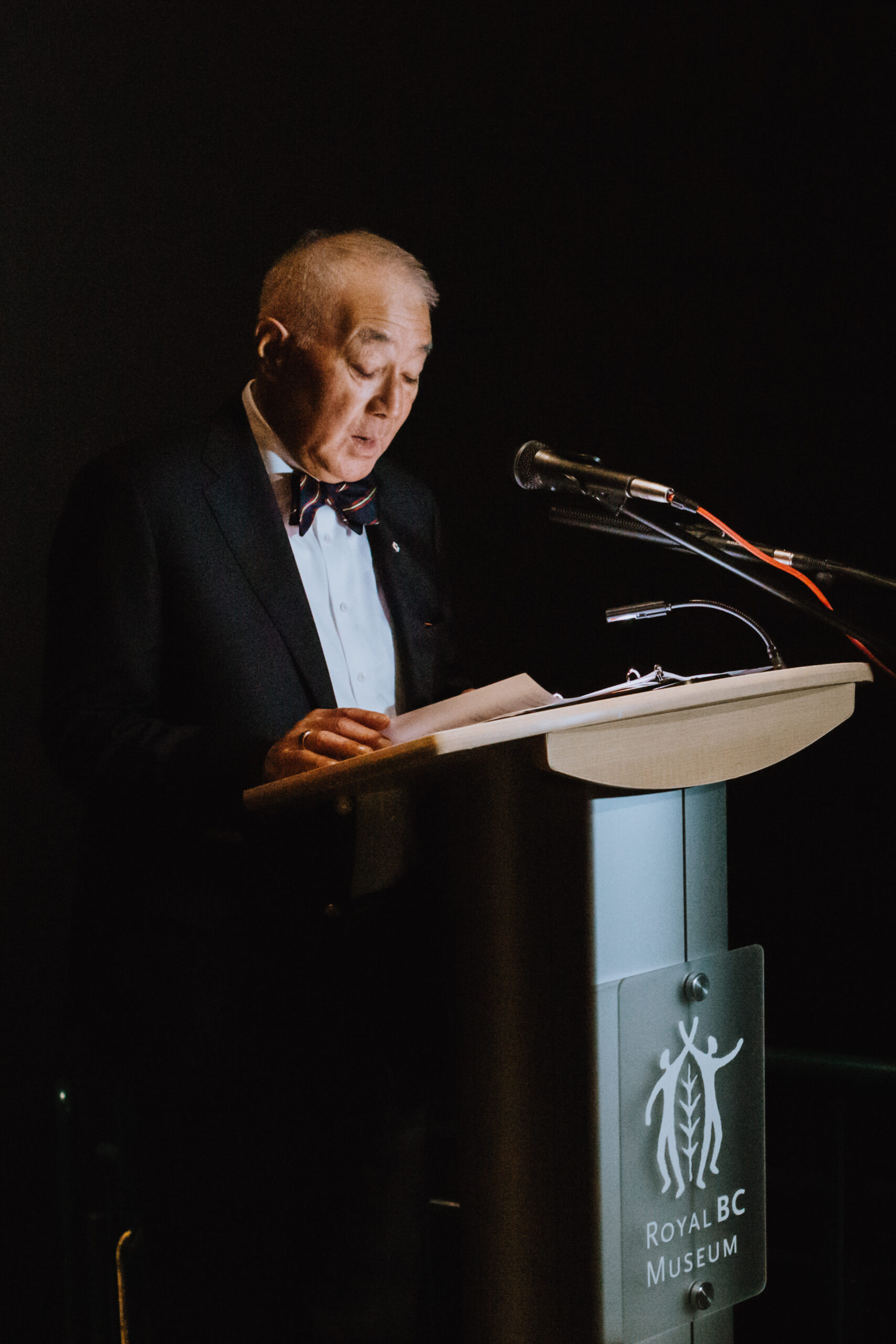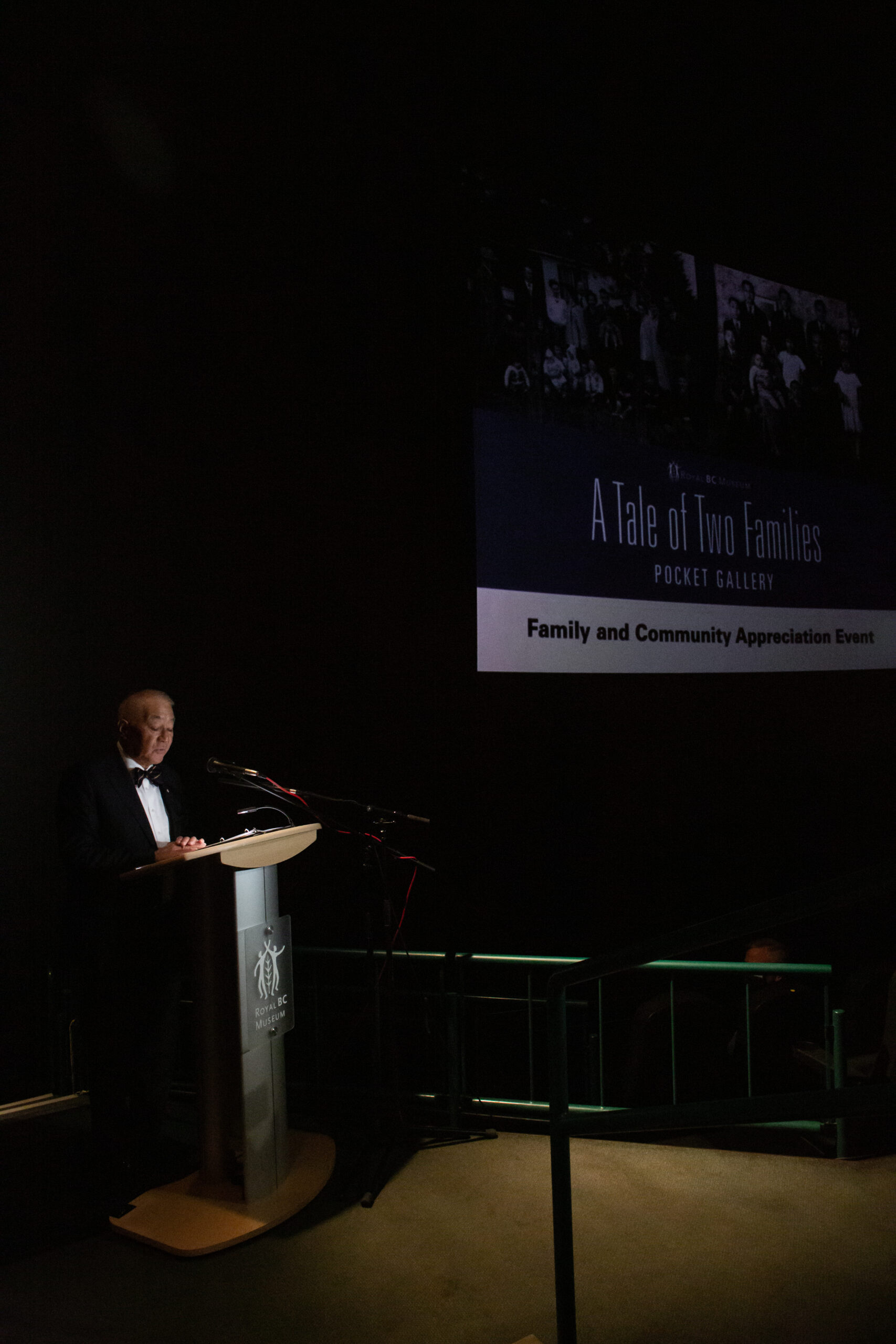Human History Curators
- GR-3346.37 2021 Speech from the Throne
- The archives’ most recent record, created less than a year ago·
- GR-3518 Records of the Provincial Health Officer *
- This accrual covers the records of Dr. Perry Kendall, who served as the Provincial Health Officer from 1999 to 2018. The records address the health of Indigenous populations, water quality and pandemic influenza preparation among other public health topics.
- GR-3676 and GR-3677 Cabinet committee records and Premiers’ records*
- Large accruals were added to these series this year, documenting cabinet proceedings and priorities. Most records up to 1991 are publicly accessible.
- GR-3890 Drafting legislation case files*
- Comprehensive records covering all aspects of the process for drafting and approving provincial legislation. The records relate primarily to the 1970s and 1980s.
- GR-3948 Notebook related to the Tsilhqot’in War
- This delicate and difficult to decipher notebook relates to the events of the 1864 Tsilhqot’in War. It includes a diary of a group of settlers attempting to apprehend the Indigenous men allegedly involved in the deaths of several settlers.
- GR-3996 Conservation Officer Service major investigation case files*
- The series consists of the major investigation case files of the Conservation Officer Service between 1992 and 2007. Major cases are serious in nature and address complex issues such as trafficking animal parts, big-game poaching, illegal fishing or guiding, or selling animals for human consumption that are procured illegally.
- GR-3999 Environmental Appeal Board records*
- This series includes appeal files submitted to the Environmental Appeal Board and its predecessors: the Pollution Control Board and Pesticide Control Board. The records document the government’s management of the environment.
- GR-4000 Provincial Police circulars and wanted posters*
- This series includes a variety of informational posters for alleged criminals wanted across Canada and the United States. Many of the records are pasted into indexed volumes, serving as simple criminal record “databases.”
- GR-4002 Forest Practices Board meeting files*
- This series includes records of the Forest Practices Board which serves as the independent watchdog for sound forest and range practices in the province.
- GR-4005 Conservation Officer Service wildlife attack final reports*
- This series consists of final reports summarizing wildlife attacks on humans created by the Conservation Officer Service between 1991 and 2012. They illustrate the evolution of wildlife attack investigative technique, causes of wildlife attacks, and methods used to dispatch wildlife.
- GR-4008 BC Ambulance Service and air evacuation major accident and investigation files*
- This series consists of BC Ambulance Service (BCAS) and air evacuation major accident and incident investigation files between 1992 and 2011.
- GR-4041 Witness statements from CPR train robbery
- These records purport to be related to a train holdup by the infamous Bill Miner at Ducks. The details match other historical accounts of the incident; however, the year is wrong! These may benefit from some further research.
- GR-4048 Prince Rupert Forest District wild fire mapping records
- These huge volumes document wildfires in the Prince Rupert region from 1921 to 1980
- GR-4051 British Columbia Lottery Corporation’s ombudsperson’s investigations*
- This series consists of the ombudsperson’s investigation into the British Columbia Lottery Corporation’s prize payout procedures between 1999 and 2010. BCLC retailers and BCLC retailer employees appeared to be winning major prizes at a higher rate than other players in the province. The public and the media expressed concern that some of those winning tickets may actually belong to ordinary players.
- GR-4063 Cariboo government office records
- This series contains colonial records from the Cariboo region, including Barkerville. Records cover all aspects of government administration in the area from registering mining claims to court cases to crime statistics.
- GR-4064 Correspondence regarding immigration
- This series includes correspondence of the Provincial Immigration Officer from 1903-1905. Many records relate to the deportation of Japanese people under the racist 1904 Immigration Act.
- 24930E Plan of the No. 2 Extension coal mine
- This plan was made as part of the investigation into the cause of a 1909 explosion in the Ladysmith mine, resulting in the deaths of 32 men.
- GR-0522 Kamloops Government Agent land records
- This is a large series of records (160 boxes) that show a comprehensive history of land use in the Kamloops area over 100 years. This includes the time period the land was managed by the Canadian government as part of the Railway Belt.
- GR-3929 Riverview Hospital Historical Collection*
- This collection includes a wide variety of records related to the operation of Riverview Mental Hospital (previously known as Essondale). The records were collected and maintained by the Riverview Historical Society. With the closure of the hospital in 2012, government records in the society’s holdings were transferred back to the government and have recently been made available in the archives. The collection includes records of all media and provides an overview of the hospital’s history, grounds, staff, and patient care.
Every year the Government Records team at the BC Archives processes over 2,000 boxes of records created by the provincial government. Most of these records can now be accessed by anyone, even you! Just remember that all government records are covered by privacy legislation, such as the Freedom of Information and Protection of Privacy Act. This means some records have access restrictions on sensitive or personal information. Here is an overview of just a few of the record series from the last year or so that are now available in our database.
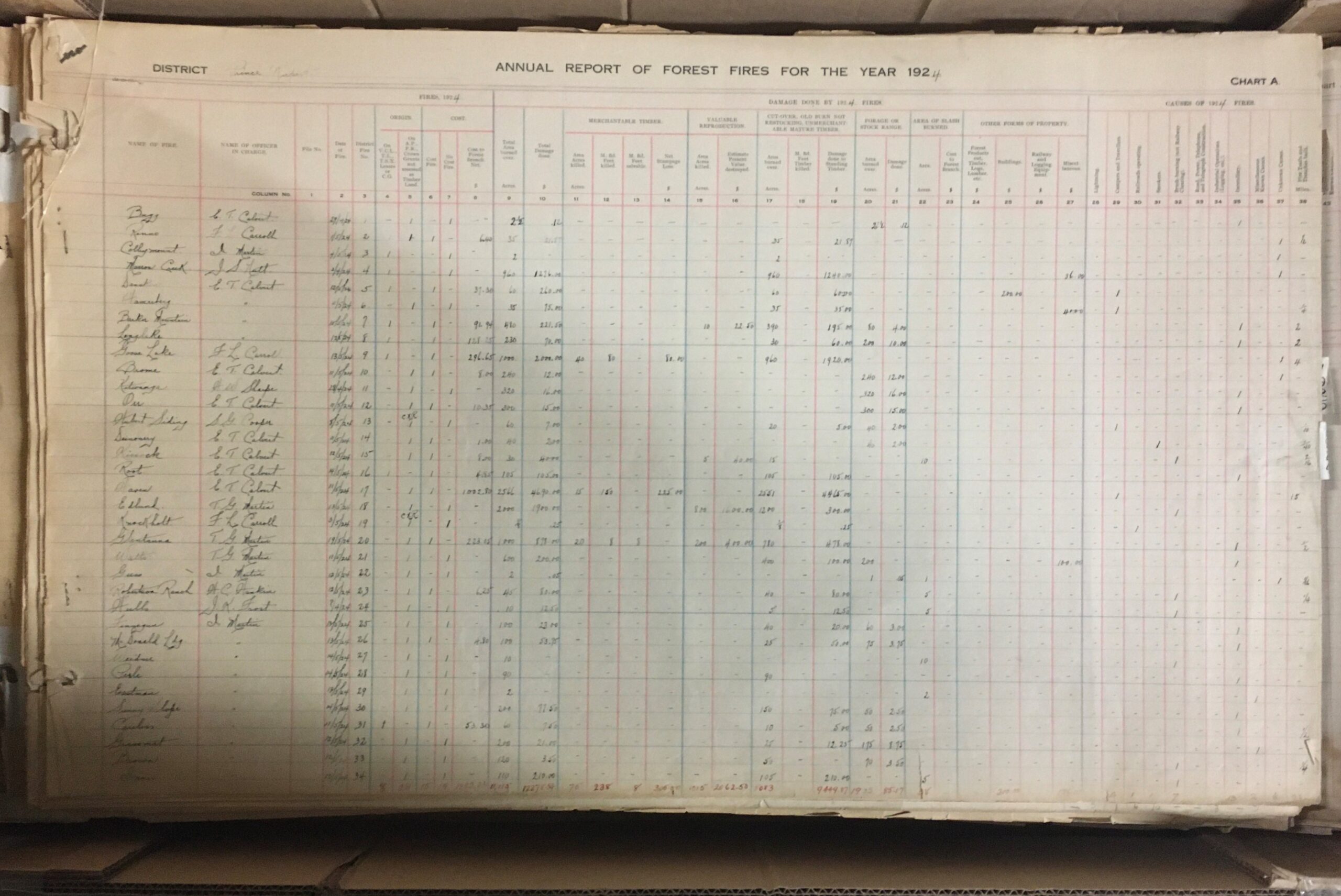 A page from the GR-4064 fire atlas. Each volume measures over three feet by four feet and weighed over 60 pounds.
A page from the GR-4064 fire atlas. Each volume measures over three feet by four feet and weighed over 60 pounds.
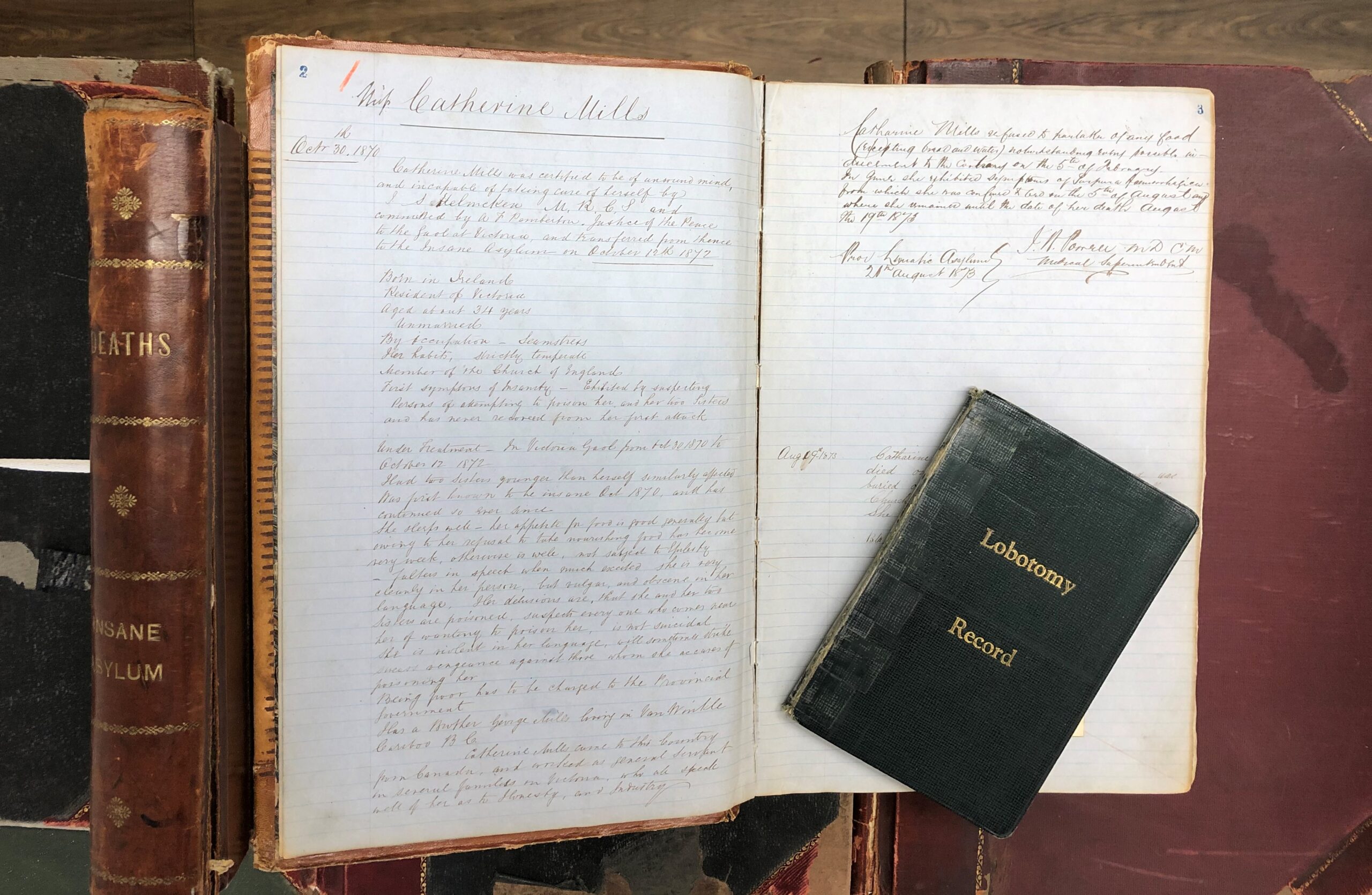 A selection of volumes from GR-3929, including the first patient file from 1870.
A selection of volumes from GR-3929, including the first patient file from 1870.
Bonus records! Here are some other records that were made available a bit before 2021, but are still worthy of a mention:
*These series include sensitive personal information or other restricted records that are not publicly accessible.
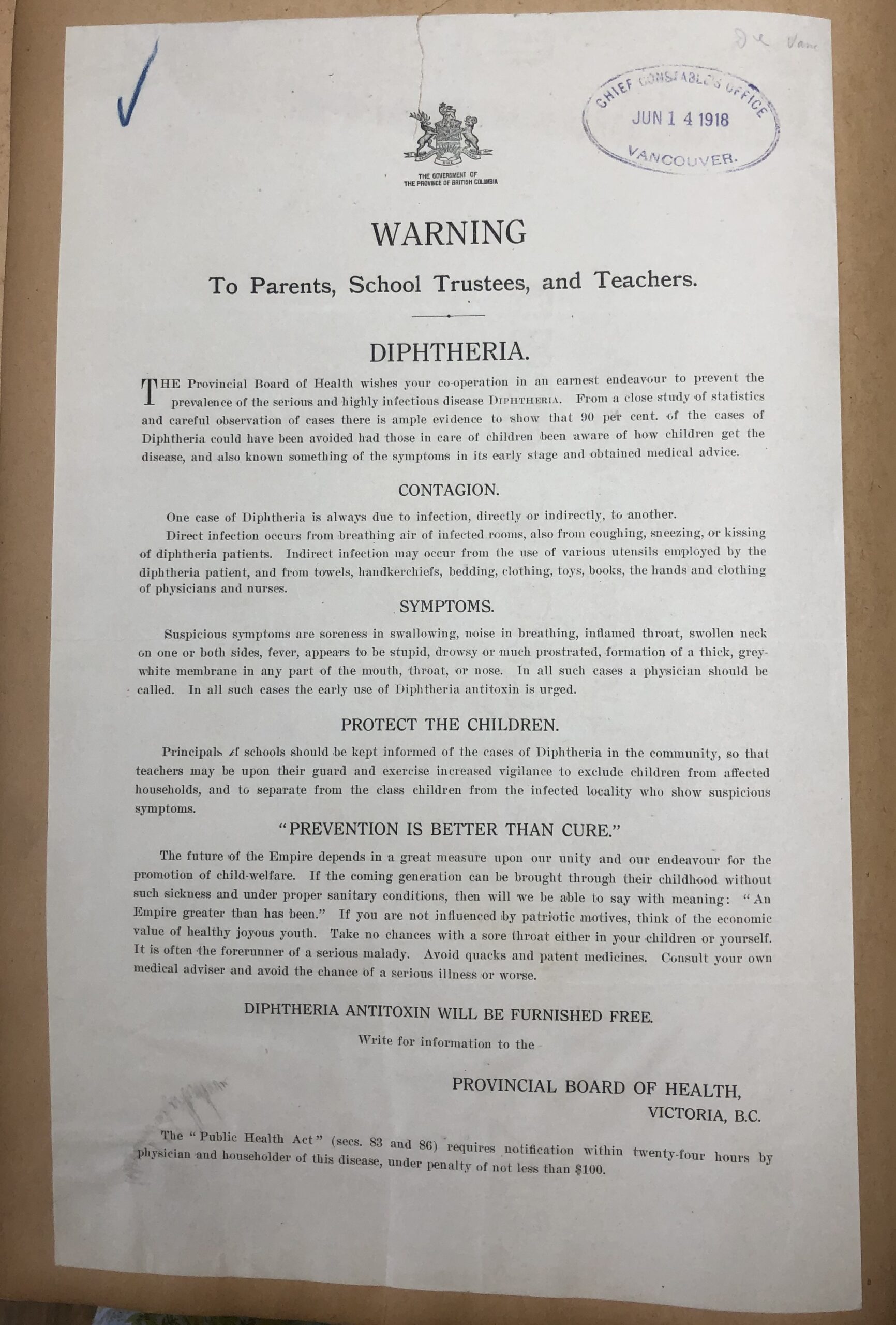 A public notice to be posted in schools, included with police records in GR-4000
A public notice to be posted in schools, included with police records in GR-4000
A Tale for COVID Time
I have always believed that culture can transform, art can heal and history holds a mirror to ourselves and our time—thus my deep love for the study of history, arts and culture.
This current unsettling time of global pandemic crisis easily evokes feelings of insecurity and fear. It is a time of racism and uprisings against racism and other forms of discrimination. When I was given a small public space to share my work, I wondered what would be helpful when facing the challenges of our time.
The Royal BC Museum’s special Pocket Gallery A Tale of Two Families: Generations of Intercultural Communities and Family Lessons conveys a special message for the time of COVID. It assures us other people have not only made it through harsh times but have built legacies of success and community support.
Due to historical exclusion and colonial record-keeping practices, few families from settler minority groups can trace their histories back to the gold rush period that began in 1858. Since 2016, I have worked with two families that can: one French Canadian and the other Chinese Canadian. Their stories reveal rarely recorded generational continuities from the gold rush era to the present day. These families have survived times of great adversity, including the Great Depression and the Chinese exclusion era, to build lasting legacies in BC. What has kept the two families going for generations and through difficulties? What has allowed them to continue to grow and prosper today?
A deeper look at the family histories through the family members’ lenses reveals patterns in how the two families persisted through generations. Both families emphasize education, intercultural community building and kindness as family values. Their ideals resonate with our shared experiences and collective values as Canadians. During times of extraordinary challenges, such core values can shape people’s response. The stories of the Guichon and Louie families exemplify resilience through hard times in British Columbia history. Their family lessons are British Columbians’ strength.
On September 23, 2020, the museum hosted a special COVID-safe appreciation event for the featured families and communities of this Pocket Gallery. Maurice Guibord, président, Société historique francophone de la Colombie-Britannique, shared on video the significance of the Guichon family history.
Ms. Hilde Rose, the only living third-generation ranch operator, spoke on behalf of the Guichon family. With her husband Guy Rose, who was a third-generation Guichon, she operated the Quilchena Cattle Co. and the historic Quilchena Hotel for decades.
Mr. Alan Lowe, board chair of the Victoria Chinatown Museum Society and long-time beloved leader and former mayor of Victoria, spoke on behalf of the Victoria Chinatown communities to stress the importance of Chinatown history and the need to preserve it with a new museum in Victoria’s Chinatown.
Mr. Brandt Louie spoke on behalf of the Louie-Seto family as a direct descendant of the pioneer families of the Louies, Setos and Lees in BC, and of the Lews from the United States. He is also the third-generation leader of the H.Y. Louie Family Co. Ltd. His full speech can be found here.
The families’s joined commitment to education, intercultural community building and kindness resonate with our shared values as Canadians. These core values can help us shape our response during COVID time and the fight against discrimination through intercultural understanding and the pursuit of social justice.
CETA 1972 style post
While working with archival documents it is always of interest to look at the other side of the page.
In today’s example, A person needed to publish several legal notices in the local paper.
Luckily, the entire newspaper page was submitted.
The following article appeared on the back of the page (The Province [Vancouver], Friday, 10 November, 1972.)
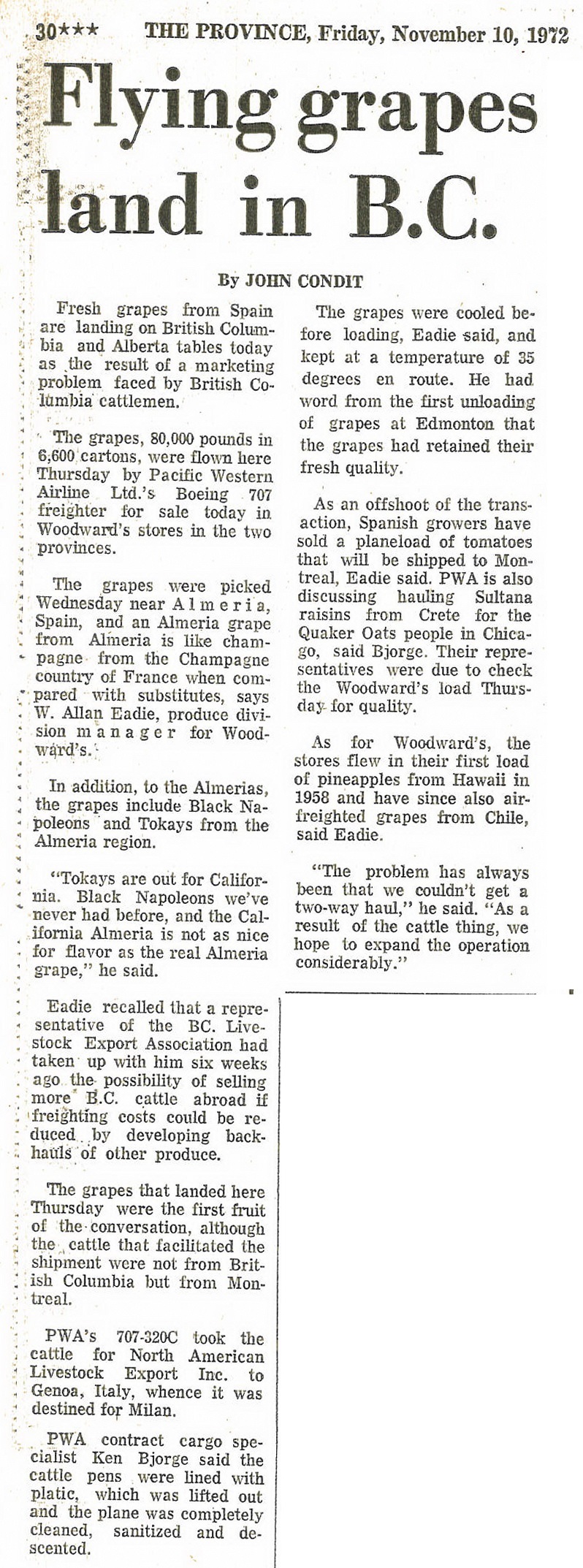
It describes how Pacific Western Airlines was able to ship live beef to Europe, because its cargo plane could return with a cargo of grapes which were now available throughout BC and Alberta.
The article also explains how the plane was cleaned, presumably before the grapes were loaded on to the plane.
The Wikipedia page for PWA mentions the following:
Boeing 707 equipment was added to the fleet in 1967… The addition of a cargo model Boeing 707 meant that livestock and perishables could now be carried all over the world, and the name Pacific Western became synonymous with “World Air Cargo”. The company aircraft visited more than 90 countries during this period of time.
Pacific Western operated a worldwide Boeing 707 cargo and passenger charter program until the last aircraft was sold in 1979.
This is in the era where container shipping was beginning its world wide adoption.
Air cargo was expanding during this time as well, when “Boeing launched the four engine 747, the first wide-body aircraft” in 1968.
As the newspaper report explains, transportation of people and goods only makes sense if the airplane is loaded to maximum capacity at all times.
This was the thinking behind the Triangular trading system of the 19th century.
Moving people extended this thinking to modern day hub airports such as Toronto Pearson, London Heathrow and Dubai UAE.
Even today with airplanes that can travel half way around the world, the take off and landing locations are the national hub airports.
Air cargo has undergone the same thinking.
In the 1972 news report, it only made sense to Pacific Western Airlines to undertake this one-off trip once the entire route was fully booked.
The article goes on to describe how the airline was looking for other opportunities. They recognized the potential, but the tipping point (the development of an airport hub for cargo) had not yet arrived.
To see what kind of completion PWA would face today simply go to an airplane tracking app and filter for FedEx planes, or track the Memphis airport.
UPS has a similar hub in Louisville. Here is an example of one airplane in the UPS fleet that revisits the hub city regularly. This particular plane left Louisville on 28 May 2017 and travelled around the world via Honolulu, Hong Kong, Dubai, Cologne, and Philadelphia, before returning to Louisville three days later.
When you read this article, there will probably be more recent examples of round the world trips or forays to Asia or Europe before returning to it’s home base.
The article does not quote anyone from the BC Livestock Export Association, however Europe is again front of mind for the Cattlemen’s Association.
Mr. W. Allan Eadie produce manager for Woodward’s, and PWA cargo specialist Ken Bjorge would be impressed!
As Mister Eadie says in the report, he hoped that this operation would expand because of “this cattle thing.”
He and Mister Bjorge may have failed to realize that the problem was not to solve the “cattle thing.” They needed to solve the “hub thing.”
On a side note, The Imax movie “Living in the Age of Airplanes” has an excellent section on the transportation of flowers that is well worth the price of admission.
PWA purchased CP Air to form Canadian Airlines International in 1987.
Canadian Airlines has the distinction of being the first airline in the world to have a website on the Internet (http://www.cdnair.ca/).
It merged with Air Canada in 2001.


